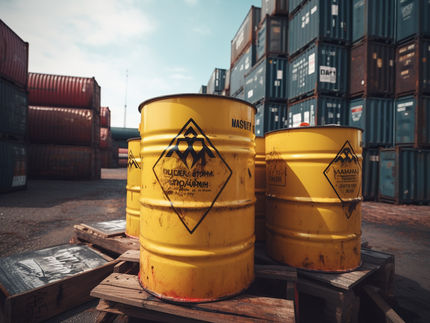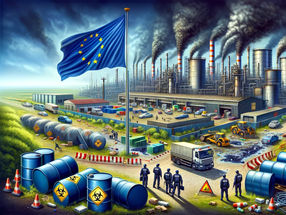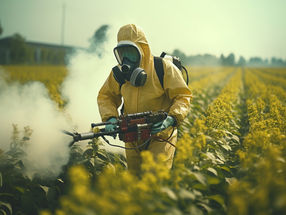Poisonous mercury discoveries on derelict industrial sites
BfR brochures "Cases of poisoning reported by physicians 2009" documents poisoning accidents of children
Advertisement
Hospitals and poison information centres of the Federal States have notified the Federal Institute for Risk Assessment (BfR) of cases of poisoning suffered by children and adolescents after their contact with metallic mercury on derelict industrial sites. In several cases the children had taken the mercury home to play. Only days or weeks later they showed symptoms of mercury poisoning such as hypokinesis, inappetence and skin irritations. When observing these symptoms, parents should also think of the possibility of mercury poisoning, in particular if they live close to derelict industrial sites or smaller industrial premises. In 2009 26 cases of poisoning of this kind were notified, as can be learned from the BfR brochure "Cases of poisoning reported by physicians 2009". The brochure provides an overview of all cases of poisoning reportes to BfR, e.g. by mixing up bear's garlic and lilies of the valley or indigestibility reactions after the consumption of snoek mackerel. It is available free-of-charge from BfR.
In former times mercury was used primarily in electrical switches, thermometers, barometers and blood pressure meters. Today its applications have declined but relevant amounts are still contained in high pressure vapour discharge lamps for industry and street lights as well as in special batteries. Health impairments are possible by mercury vapours and longer term direct skin contact. When taken up via the digestive tract, metallic mercury is comparatively harmless. If only small amounts are taken up orally, e.g. the content of a clinical thermometer, no relevant amounts are resorbed.
Organic compounds of mercury are significantly more toxic than metallic mercury. The toxic effect of mercury is based on its ability to modify protein and inhibit important enzymes. Symptoms of an acute poisoning, after inhalation of mercury vapour from heated mercury for instance, are respiratory distress, bronchitis, fever and headache. The effect of mercury compounds as a chronic poison are, however, more significant. Serious alterations concerning the nervous system with consequences for the motor functions and the general state of health, skin symptoms, blood pressure increase and tachycardia can be consequences of a chronic poisoning. The organism of a child can already react very sensitively to low amounts of the heavy metal. In infants and small children different symptoms and finely spotted rash can be an expression of a so-called Feer's disease.
When industrial plants were shut down, dangerous substances were frequently left behind. This is at least documented by the cases of poisoning which occurred on derelict industrial sites - mostly involving mercury. Children seem to be particularly attracted by the "living silver" which they often take home secretly from the alleged "adventure playgrounds". In 2009 the BfR was notified of a total of 26 cases of poisoning by mercury which occurred on derelict industrial sites. Cases were also documented in previous years. In the brochure "Cases of poisoning reported by physicians 2009", which is published by the Centre for Documentation and Assessment of Poisonings within BfR, cases of poisoning in children are described. These children had to be treated in hospitals; in one case serious late sequelae were reported.
The brochure "Cases of poisoning reported by physicians" includes an overview of all cases of poisoning reported to BfR in 2009. They originate from physicians and doctors in hospitals, doctor’s surgeries, poison information centres and employer liability insurance associations which are obliged to report cases of poisoning in accordance with § 16e of the German Chemicals Act. The Centre for Documentation and Assessment of Poisonings received a total of 3,493 notifications during the reporting year. The brochure "Cases of poisoning reported by physicians 2009", which is particularly intended for doctors, hospital and emergency service staff, is available free-of-charge from BfR.
































































